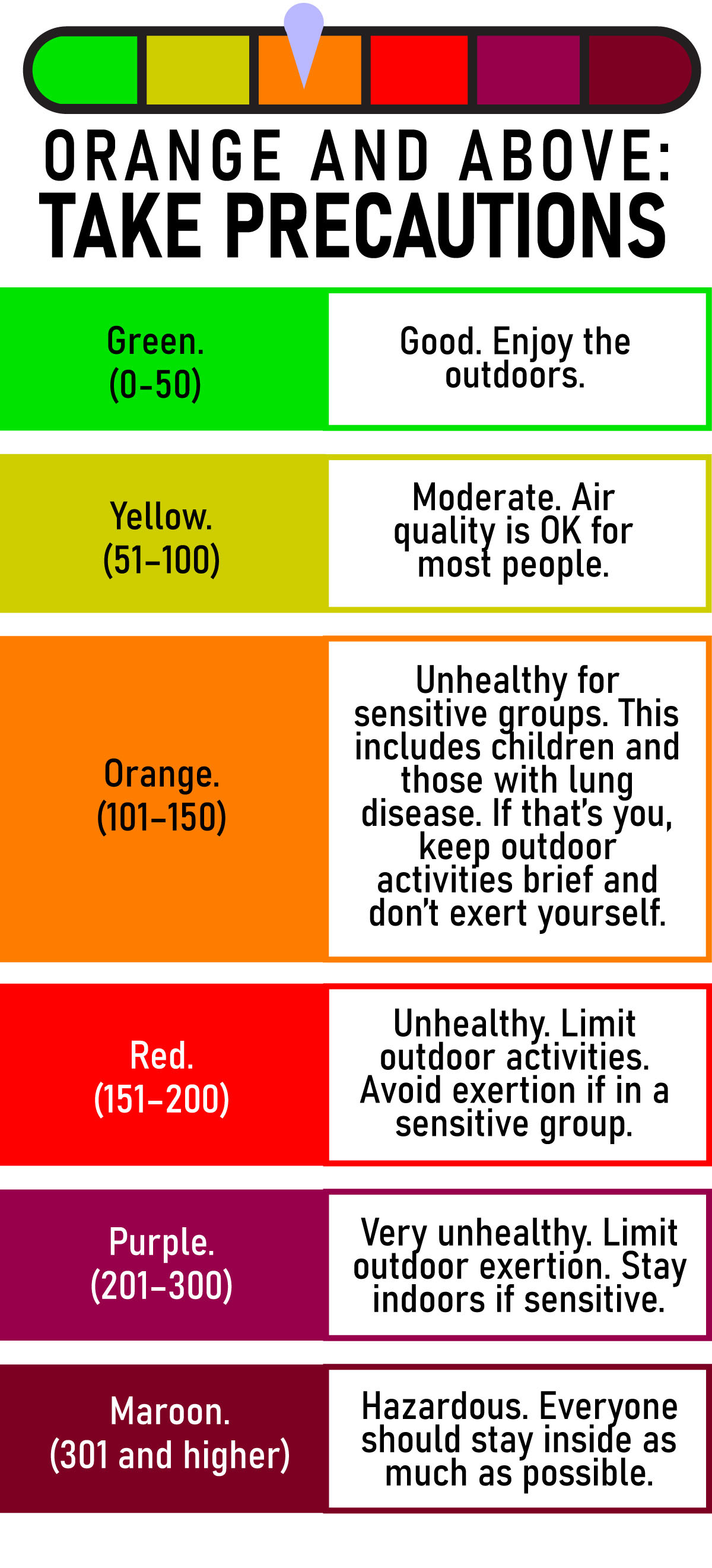The U.S. Environmental Protection Agency’s air quality index (AQI) shows you when the air is clean or polluted. Find it on your weather app or at AirNow.gov. You can use the AQI daily to protect your lungs from things like smog or wildfire smoke.

ORANGE AND ABOVE = TAKE PRECAUTIONS
Green. (0–50) Good. Enjoy the outdoors.
Yellow. (51–100) Moderate. Air quality is OK for most people.
Orange. (101–150) Unhealthy for sensitive groups. This includes children and those with lung disease. If that’s you, keep outdoor activities brief and don’t exert yourself.
Red. (151–200) Unhealthy. Limit outdoor activities. Avoid exertion if in a sensitive group.
Purple. (201–300) Very unhealthy. Limit outdoor exertion. Stay indoors if sensitive.
Maroon. (301+) Hazardous. Everyone should stay inside as much as possible.
Sources: AirNow.gov; American Lung Association
Do you have COPD? Bad air can trigger flare-ups. Learn the early signs of a flare-up. Doing so may help you stay healthier.
Reviewed 5/20/2024
Sources
- AirNow.gov. "Air Quality Index AQI basics." https://www.airnow.gov/aqi/aqi-basics/.
- AirNow.gov. "Air Quality and Outdoor Activity Guidance for Schools." https://www.airnow.gov/sites/default/files/2018-09/air-quality-and-outdoor-activity-guidance-2014.pdf.
- American Lung Association. "10 Tips to Protect Yourself from Unhealthy Air." https://www.lung.org/clean-air/outdoors/10-tips-to-protect-yourself.
- American Lung Association. "Air Quality Index." https://www.lung.org/clean-air/outdoors/air-quality-index.
- American Lung Association. "What Makes Outdoor Air Unhealthy." https://www.lung.org/clean-air/outdoors/what-makes-air-unhealthy.
- American Lung Association. "Who Is at Risk?" https://www.lung.org/clean-air/outdoors/who-is-at-risk.